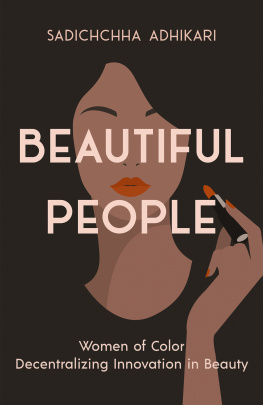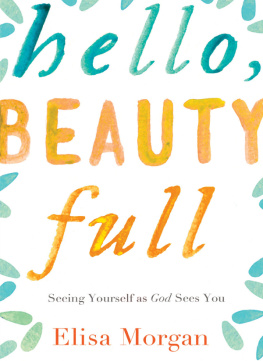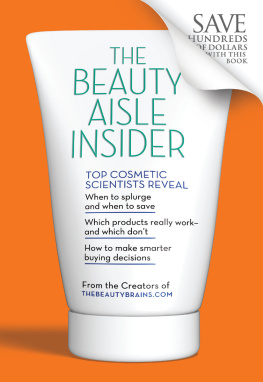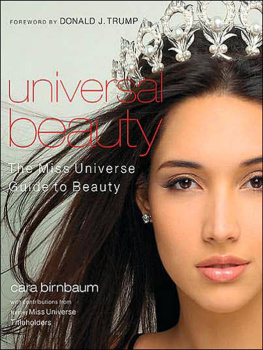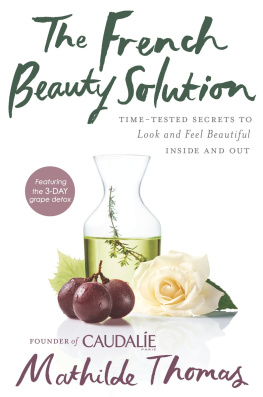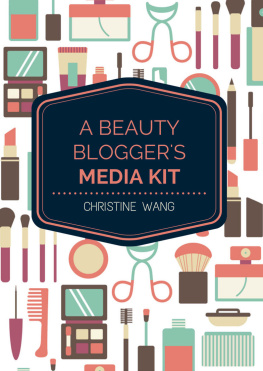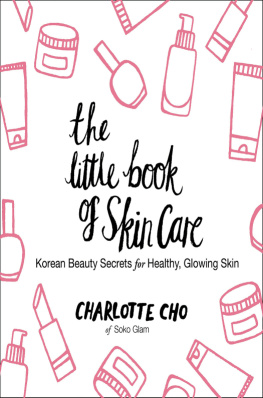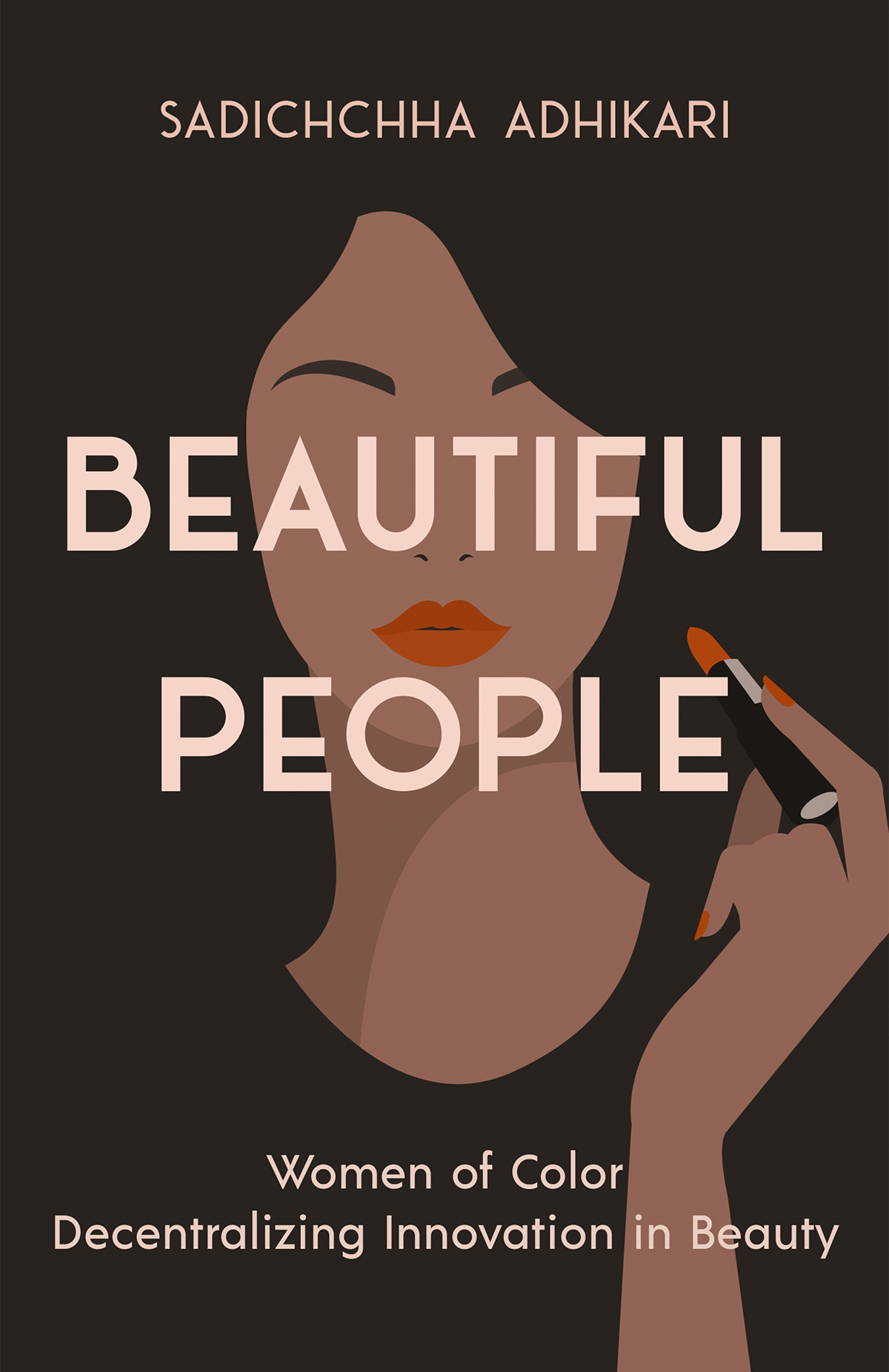
NEW DEGREE PRESS
COPYRIGHT 2021 SADICHCHHA ADHIKARI
All rights reserved.
BEAUTIFUL PEOPLE
WOMEN OF COLOR DECENTRALIZING INNOVATION IN BEAUTY
ISBN 978-1-63730-433-4 Paperback
978-1-63730-523-2 Kindle Ebook
978-1-63730-524-9 Ebook
BEAUTIFUL PEOPLE
To all my beautiful people,
you know who you are.
I walk into CVS and go straight to the makeup aisle. I know exactly what Im looking for. Ive searched online for brown girl makeup, brown girl foundation, and dark skin mattifying foundation. I know the brand I need to go for, and Ive narrowed it down to two to three shades I should try.
I brought my own makeup sponge with me so I could sample from CVS (sorry!). I dab shade A onto my hand then apply to my chin and look at my face in the light, just like the Sephora employees taught me to do. Its a little light. Shade B is a little dark. Shade C, too dark.
I experiment with the products while hiding from the store clerks. My hand looks like a splotchy tapestry of different shades of dark beige, but none that fit me well. Ive gotten streaks of foundation on my clothes and have now suspiciously been in the same CVS aisle for twenty-five minutes. Nothing is really blending into my skin. I dont have enough options, but if I come home empty-handed, Ill have to start my research all over again.
Now Im trying to mix the colors on the back of my hand to see if a mixture works. The generously fluorescent lighting makes things okay. I note the proportions of my concoction and buy Shades A and B.
I go home and give it a try; it doesnt work. I return B and keep Shade A; it doesnt work. I buy Shades B and C and mix them; it doesnt work.
Im just trying to buy makeup. Not only are drugstore options limited, but Ive had so many experiences like this in which 1) there are not a lot of shades catering to my skin tone, and 2) when I do find products, there arent enough shades to match my skin tone exactly.
Does this happen to everyone? Has this happened to you? Why is it so hard to find makeup?
CONTENTS
INTRODUCTION
Once dormant and repetitive, the beauty industry has become explosive and volatile, especially over the past thirty or so years. A Business Insider article showed that the global beauty industry is valued at over $530 billion and will grow to $716 billion by 2025. This is a shockingly high number. By comparison, US Apparel Market statistics show that the apparel industry is worth $1.9 trillion, which means that even at todays pace, the beauty industry makes up about a quarter of the fashion industry. In other words, one industry in which consumerism is primarily driven by a far smaller population of those who identify as women can be financially compared to the clothing industry, with a much larger consumer base.
The origins of this industry are deeply rooted in western beauty ideals. The very few scholars, sociologists, anthropologists, and others who have studied beauty ideals have often noted the industrys association with whiteness. One example is commonly seen when considering this connectionhow western beauty ideals have manifested in and been perpetuated by Miss America pageants. In fact, Leah Donella writes in NPRs Code Switch that not until 1940 were women of color allowed to enter the Miss America pageant. So until 1940, the imagery associated with American beauty was limited to a thin, blonde, blue-eyed white woman.
This is just one of many examples. Unfortunately, there are more instances like this. Consider products designed to make your skin whiter (looking at you, Fair & Lovely), or the South Korean plastic surgery market, for another example. Or, most familiar to us all, just look at most of the celebrities and influencers we see succeeding on TV screens, magazines, and everywhere else. Most of these examples tend to get consumers closer to fitting these white beauty ideals.
What does this historical landscape of beauty ideals mean for todays consumers? In other words, how are products being developed for and targeted toward women today? Putting it very generally, if you are an American cosmetics company and you have been successfully profiting for decades by creating products primarily for people to fit this beauty ideal (aka white women), why would you change your ways? Why would you choose to stop benefiting from a $530 billion industry?
The bottom line is always to sell products, according to Phyllis Ellis, creator of the documentary Toxic Beauty. If this is the case, then product development becomes a self-fulfilling prophecy of products doing well because they are primarily created and marketed to white women. Certain products dont do well because, for example, people like me cant find a good concealer shade to match our skin, so the return for the cosmetics company is lower and so, then, is the investment in these products. Its a vicious cycle of less diverse products doing poorly on the market because the items developed for a diverse consumer base tend not to work well. Its not a problem of supply and demandthere is absolutely demand from women of color for good makeup; its that the supply is simply not there.
As a result of this cycle, the development of products that are suitable for women of nontraditional shades are lower, thereby decreasing availability of these products, thereby decreasing revenue from these products, thereby decreasing investment in these products, thereby decreasing the development of these products, and on and on.
Unfortunately for the beauty industry, product development is led primarily by seven conglomerates that are making most of the go-to-market decisions. For a homogeneous industry like this, I argue that it takes women, like the women in this book, to innovate the industry by bringing diversity in the products they create in order to truly cause disruption and change. Although the examples Ive highlighted thus far are focused on the lack of shade ranges for skin cosmetics, well see later in this book examples of women who have created all kinds of inclusive beauty products that go beyond foundation and concealer.
Vicky Tsai started Tatcha because, during a trip to Japan, she found inspiration and differentiation in the products geisha had been using for over three hundred years. Huda Kattan started Huda Beauty because she wasnt able to find products to help enhance her Middle Eastern features. Nancy Twine started Briogeo because she could not find natural hair care products that would perform as promised on her hair.
These are just three out of eight stories highlighted in the book, and these stories are eight out of hundreds of women of color tapping into their heritage, their culture, their skin, and their hair, decentralizing and individualizing the beauty industry. We need choices, we need options, we need more representation of different types of women wearing these products, we need these products tested on different women, and we need to make sure these products show up well on us all.
Why do we need options? For one, because there are women of different color and cosmetic needs who deserve to see their needs met on the shelves of CVS and Sephora. More than that, though, not expanding product offerings to be more inclusive reinforces antiquated ideals of beauty and, therefore, delays the progression we are making for beauty products to fit the needs of all women. Unrealistic and unattainable beauty standards, or hyper-Westernized beauty standards in the case of the beauty industry, will also continue to perpetuate colorism and, therefore, discrimination of people who have darker skin.

